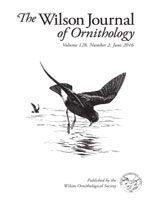Bird populations vary both spatially and temporally with consequences for patterns of species richness and community composition. Many species of birds have declined in abundance over the last 14 years at a site in lowland Ecuador. Here, we examine impacts of those declines on composition of bird assemblages on two 100-ha plots in lowland forest at Tiputini Biodiversity Station, eastern Ecuador. Birds were sampled with mist nets (2001–2014) and by direct observations (2003–2006, 2009, 2010, 2013, and 2014). Species accumulation curves were similar on both plots but varied among years; rates of accumulation were particularly low in 2013, following declines in abundance of many species. Community composition differed between the two study plots based on species and guild composition; annual changes at the community level reflected changes in abundance of many species, particularly insectivores. Overall, assemblages of birds at this site in lowland Ecuador showed substantial variation over time and, to a lesser degree, between plots. If bird populations eventually return to levels seen in the early years of this study, we might expect community composition to resemble that of earlier years as well. Results demonstrate the value of long-term (>10 years) studies on replicate plots to help understand dynamics of bird communities in lowland tropical forests.
How to translate text using browser tools
30 June 2016
Long-term changes in composition of bird communities at an “undisturbed” site in eastern Ecuador
John G. Blake,
Bette A. Loiselle
ACCESS THE FULL ARTICLE

The Wilson Journal of Ornithology
Vol. 128 • No. 2
June 2016
Vol. 128 • No. 2
June 2016
Community composition
guild
long-term
Lowland forest
species richness
tropical




